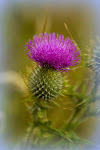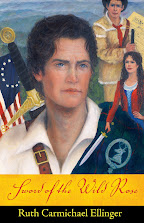
My Mother’s Hats
One evening last winter, I began the arduous task of sorting through old family photos and organizing them into a chronological chaos of sorts. I began this project with childhood photographs of my parents and grandparents. And, as all organizers of old photographs know, I was soon lost in reverie and reflection.
One distinguishing detail I noticed in the photos of my mother was her obvious fondness for hats. Thinking back over the years, I could not recall my mother going anywhere without her hat. She wore this fundamental part of her wardrobe whenever she went to town or to church or anywhere the least bit important. In fact, she wore a hat while she gardened or gathered eggs, and always at family picnics. She just loved hats!
When hats became unfashionable and everyone was going bareheaded, (even in the winter) and claiming freedom from traditional fashion, my sisters and I begged Mom to stop wearing her hats. We felt so embarrassed when Mom arrived at the PTA meeting or the band concert in her “proverbial” hat.
“Mom,” we would plead, “hats are out!”
“Well,” she replied, “I haven’t noticed the queen giving up her hats! Hats are worn by ladies and real ladies should always wear a hat. I just don’t feel complete without a hat. You girls may go bare headed if you like, but it’s not me and I must be comfortable with myself. Besides,” she said in wistful voice, “it is a nice custom, the reflection of a kinder, gentler age.”
Mom stuck to her philosophy and we grew up, married, and had homes and families of our own. We gave up the notion of trying to persuade Mom to give up her hats. Instead, we added to her collection by buying hats for all the special occasions in her life. Personally, I loved the idea of wearing hats, but I could never quite capture that same confident look, the poise and grace that made Mom look great in a hat. She wore hats with taste and charm.
Looking at the old photos just now, I came to realize that somewhere through the years; I had nearly forgotten that we girls tried our best to talk Mom out of her beloved hats. How glad I am now that she was true to her own self. Her hats were a representation of her own identity; an integral part of her character that said, I am a unique person; a woman with my own special set of convictions, my own objectives and ideals. I am me, and I am not afraid to be me.
After Mom passed away some years ago and we children lingered at the graveside, knowing our lives would never be the same without her, we said our good-bys and slowly began to leave the little country cemetery. As a last token of love and respect, my brother quietly laid her favorite hat on top of the casket.
“Bye Mom,” I whispered softly, laying my hand on the casket, touching her cherished hat for the last time, “you were truly a great lady; you taught me so much, especially how to be myself.”






















